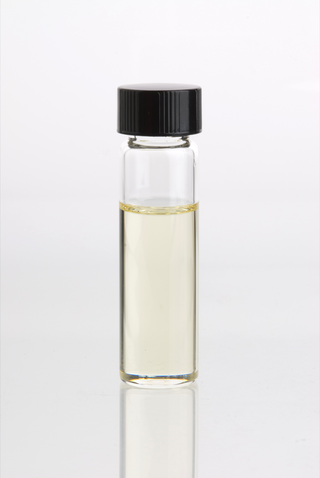
Apiaceae or Umbelliferae is a family of mostly aromatic flowering plants named after the type genus Apium, and commonly known as the celery, carrot or parsley family, or simply as umbellifers. It is the 16th-largest family of flowering plants, with more than 3,800 species in about 446 genera, including such well-known, and economically important plants as ajwain, angelica, anise, asafoetida, caraway, carrot, celery, chervil, coriander, cumin, dill, fennel, lovage, cow parsley, parsley, parsnip and sea holly, as well as silphium, a plant whose exact identity is unclear and may be extinct.

Dill is an annual herb in the celery family Apiaceae. It is native to North Africa, Iran, and the Arabian Peninsula; it is grown widely in Eurasia, where its leaves and seeds are used as a herb or spice for flavouring food.

Tarragon, also known as estragon, is a species of perennial herb in the family Asteraceae. It is widespread in the wild across much of Eurasia and North America and is cultivated for culinary and medicinal purposes.

Trillium is a genus of about fifty flowering plant species in the family Melanthiaceae. Trillium species are native to temperate regions of North America and Asia, with the greatest diversity of species found in the southern Appalachian Mountains in the southeastern United States.

Anise, also called aniseed or rarely anix, is a flowering plant in the family Apiaceae native to the eastern Mediterranean region and Southwest Asia.

Fennel is a flowering plant species in the carrot family. It is a hardy, perennial herb with yellow flowers and feathery leaves. It is indigenous to the shores of the Mediterranean but has become widely naturalized in many parts of the world, especially on dry soils near the sea coast and on riverbanks.

Illicium verum is a medium-sized evergreen tree native to South China and northeast Vietnam. Its star-shaped pericarps harvested just before ripening is a spice that closely resembles anise in flavor. Its primary production country is China, followed by Vietnam and other Southeast Asian countries. Star anise oil is a highly fragrant oil used in cooking, perfumery, soaps, toothpastes, mouthwashes, and skin creams. Until 2012, when they switched to using genetically modified E. coli, Roche Pharmaceuticals used up to 90% of the world's annual star anise crop to produce oseltamivir (Tamiflu) via shikimic acid.

Tagetes is a genus of 50 species of annual or perennial, mostly herbaceous plants in the family Asteraceae. They are among several groups of plants known in English as marigolds. The genus Tagetes was described by Carl Linnaeus in 1753.

Johann Jacob Dillen Dillenius was a German botanist. He is known for his Hortus Elthamensis on the rare plants around Eltham, London, and for his Historia muscorum, a natural history of lower plants including mosses, liverworts, hornworts, lycopods, algae, lichens and fungi.

Dysphania ambrosioides, formerly Chenopodium ambrosioides, known as epazote, Jesuit's tea, Mexican tea or wormseed, is an annual or short-lived perennial herb native to the Americas.

Myrrhis odorata, with common names cicely, sweet cicely, myrrh, garden myrrh, and sweet chervil, is a herbaceous perennial plant belonging to the celery family Apiaceae. It is the only species in the genus Myrrhis.

Valeriana is a genus of flowering plants in the family Caprifoliaceae, members of which may be commonly known as valerians. It contains many species, including the garden valerian, Valeriana officinalis. Species are native to all continents except Antarctica, with centers of diversity in Eurasia and South America.

Lamium galeobdolon, the yellow archangel, is a species of flowering plant in the mint family Lamiaceae. It is native to Europe and western Asia but it is widely introduced in North America and elsewhere. It is the only species in the genus Lamium with yellow flowers. Another common name for this species is golden dead-nettle. In New Zealand, it is called the aluminium plant or artillery plant. The common names archangel and dead-nettle have been in use for hundreds of years, dating back to at least the 16th century.

Eriophorum is a genus of flowering plants in the family Cyperaceae, the sedge family. They are found in the cool temperate, alpine, and Arctic regions of the Northern Hemisphere, primarily in the middle latitudes of North America, Europe, and Asia.

Illicium is a genus of flowering plants treated as part of the family Schisandraceae, or alternately as the sole genus of the Illiciaceae. It has a disjunct distribution, with most species native to eastern Asia and several in parts of North America, including the southeastern United States, Mexico, and the Caribbean. General common names include star anise and anisetree. The genus name comes from the Latin illicere.

Dill oil is an essential oil extracted from the seeds or leaves/stems (dillweed) of the Dill plant. It can be used with water to create dill water. Dill is an annual herb in the celery family Apiaceae. It is the sole species of the genus Anethum.

Isopogon anethifolius, commonly known as narrow-leaf drumsticks or narrow-leafed drumsticks, is a shrub in the family Proteaceae. The species is found only in coastal areas near Sydney in New South Wales, and to the immediate west. It occurs naturally in woodland, open forest and heathland on sandstone soils. An upright shrub, it can reach to 3 m (9.8 ft) in height, with terete leaves that are divided and narrow. The yellow flowers appear in the Spring, from September to December, and are prominently displayed. They are followed by round grey cones, which give the plant its common name of drumsticks. The small hairy seeds are found in the old flower parts.

Anchusa officinalis, also knowns as common bugloss or common alkanet, is a species of flowering plant in the borage family. It is native to Europe and small parts of western Asia, but has been escaped from cultivation to grow in additional locations in Europe and the Americas. The flowers are noted for their popularity with bumblebees due to a large nectar flow. The plants have been used in traditional medicines, but were falling out of favor by the early 1800s. They are still planted in gardens for their popularity with bees and their blue flowers.

Illicium parviflorum, commonly known as yellow anisetree, yellow-anise, swamp star-anise, and small anise tree, is a species of flowering plant in the family Schisandraceae, or alternately, the Illiciaceae. It is native to Florida in the United States. It historically occurred in Georgia as well, but it has been extirpated from the state.
In Greek and Roman mythology, Anethus is a beautiful youth who undergoes transformation under unclear conditions and becomes a small flowering plant bearing his name, the dill. He and his story is only found in Maurus Servius Honoratus, a Latin grammarian who lived in the fourth and fifth centuries AD.



















